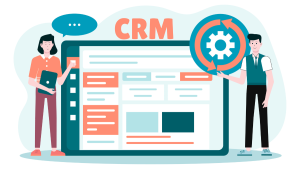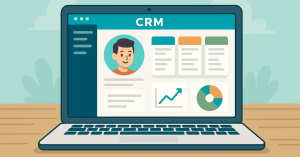Salesforce marketers know they’re sitting on a goldmine of customer data but using it for campaigns can feel impossible. Too many fields, inconsistent data entry, and platforms that make segmentation overly complex all get in the way. The result? Generic messaging, missed opportunities for personalization, and marketing campaigns that don’t reflect the depth of your CRM.
The emfluence Marketing Platform makes Salesforce data practical. With support for up to 250 custom fields, emfluence gives marketers the power to sync the data points that matter most, build smarter segments, and create automation that feels relevant instead of cookie-cutter. You don’t need an admin or months of setup. You just need to pick the right fields. Here are five data points every Salesforce marketer should start with.
1. Lifecycle Stage
What it is: The journey from Awareness to Consideration to Convert—your version of the classic funnel that reflects how leads move from first touch to closed deal.
Why it matters: Not every contact should get the same campaign. Someone in Awareness needs education and thought leadership, while someone in Convert is looking for proof points and next steps.
How emfluence makes it easy: Sync lifecycle stage from Salesforce, then use it in emfluence to branch nurture campaigns. Awareness-stage leads can receive blog-driven content, prospects in the Consideration phase get invites and comparisons, and contacts that have converted see onboarding emails, cross-sell emails, and NPS surveys.
On top of that, emfluence gives marketers the ability to segment audiences by customer journey stage and access journey reporting that shows exactly how many contacts live in each bucket. That means you’re not just running campaigns—you’re measuring progress across the funnel, proving how marketing influences movement from Awareness through Convert.

2. Industry
What it is: A simple dropdown in Salesforce that identifies vertical.
Why it matters: Industry is one of the strongest drivers of messaging relevance. A manufacturing prospect has different challenges than someone in higher ed.
How emfluence makes it easy: Map Salesforce’s industry field into emfluence, then segment audiences for tailored content. You can even create automated branches in nurture workflows to insert industry-specific proof points—without creating a new campaign for every audience.
3. Product interest
What it is: The product family, feature set, or solution a prospect cares about most.
Why it matters: It’s the fastest way to get beyond generic messaging. A contact interested in analytics doesn’t need emails about event automation.
How emfluence makes it easy: Sync product interest as a custom field and build hyper-targeted campaigns. Trigger automations when product interest changes, or tailor CTA language so it speaks directly to their needs.
4. Region
What it is: Geographic data—city, state, zip code.
Why it matters: Events, timing, and offers often depend on location. Plus, region fields make it easier to route to the right sales team.
How emfluence makes it easy: Map region fields and use them for event invites, time zone-sensitive campaigns, or territory-specific nurturing.
5. Owner / Team
What it is: The Salesforce record owner or assigned team.
Why it matters: This simple field unlocks personalization and alignment with sales. Campaigns can use “from” lines tied to the owner, and alerts can be routed to the right person.
How emfluence makes it easy: Sync the owner field and use it to:
- Personalize “from” lines and signatures in emails
- Trigger alerts back into Salesforce if someone engages
- Report engagement by rep or team
Why Start with These Five
One of the biggest challenges for Salesforce marketers is data overwhelm. With hundreds of fields to choose from, it’s tempting to sync everything, but more data doesn’t equal better marketing. These five fields give you the core segmentation and personalization you need to start strong.
Once campaigns are running and proving value, you can expand—adding more niche fields like purchase history, support status, or custom scoring. emfluence gives you the flexibility to grow into complexity at your own pace.
The emfluence Difference
Marketers often tell us they’ve tried to build targeting in other platforms and ended up stuck waiting on admins or consultants to configure data. emfluence was designed differently. With intuitive field mapping and support for up to 250 custom fields, marketers can take control of their own data strategy.
And because emfluence embeds directly into Salesforce, you don’t need to switch tabs or run exports to see the impact. Campaign performance, contact-level engagement, and segmentation data live right where sales already works. That alignment keeps everyone moving in the same direction.
The Bottom Line
Salesforce holds the data. emfluence makes it actionable. By focusing on five key fields—lifecycle stage, industry, product interest, region, and owner—you can unlock better segmentation, sharper personalization, and campaigns that actually feel built for your audience.
If you’re tired of clunky workflows and complex platforms that bury you in options without delivering results, emfluence offers a simpler path. We give Salesforce marketers practical tools to put their CRM data to work—and clear proof that your campaigns drive revenue.
If you’re ready to use Salesforce data the way you always wanted, emfluence is built for you. Start your free trial or book a demo today.


